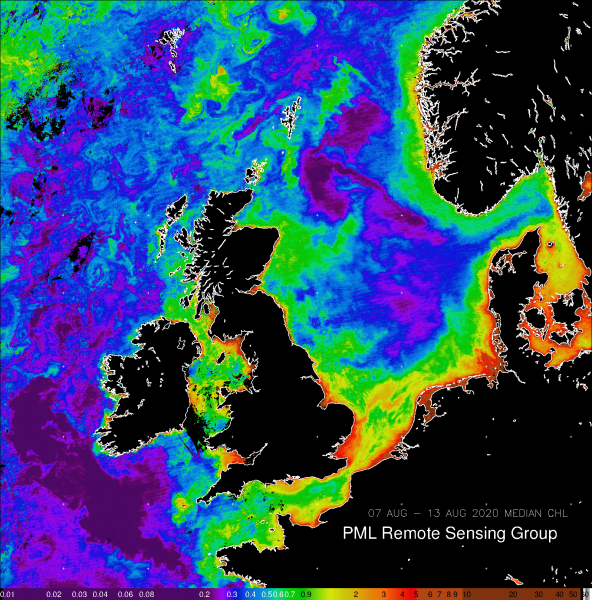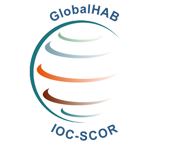The overall aim of the IOC Harmful Algal Bloom Programme (HABP) is to foster the effective management of, and scientific research on, harmful algal blooms in order to understand their causes, predict their occurrences, and mitigate their effects.
The HABP is overseen by the Intergovernmental Panel on Harmful Algal Blooms (IPHAB, UK Contact: Eileen Bresnan, Marine Scotland). A number of task teams feed into this. The IOC-SCOR GlobalHAB is overseen by the IPHAB on behalf of the IOC, a sponsor of GlobalHAB (UK Contact: Neil Banas, University of Strathclyde).
The full IPHAB activities list has been reduced here and aligned with the programme workplan format (operations & services, travel are not included, neither are the Regional Groups, the latter due to no UK participation) from the 15th IPHAB meeting in 2021 to highlight UK participation within IPHAB governance:
IOC Intergovernmental Panel on Harmful Algal Blooms: Oversees and guides the HABP UK Contact: Eileen Bresnan (Marine Scotland) | ||
|---|---|---|
| Scientific Elements | Capacity Development | Publications |
Global HAB Scientific Steering Committee oversees the Global HAB programme sponsored by the IOC and SCOR. Neil Banas (Strathclyde University) is a member of this steering committee. | Jeremy Young (UCL) lectures as part of the Advanced Phytoplankton Course | Eileen Bresnan (Marine Scotland) is one of the editors of the Harmful Algal News |
| The ICES-IOC Working Group on HAB Dynamics (WGHABD) has a number of UK participants from Cefas, SAMS, PML, and AFBI-NI. | ||
| The ICES-IOC-IMO Working Group on Ballast and Other Ship Vectors (WGBOSV) has UK participation from Cefas, Orkney Islands Council, Maritime and Coastguard Agency, IMO, SAMS, PML and Marine Scotland | ||
| Eileen Bresnan (Marine Scotland) was one of the contributors to the Global HAB status report | ||
At its Thirty-second Session, June 2023, the IOC Assembly decided to convene a seventeenth session of the IPHAB in order to maintain and accelerate momentum in the development and implementation of the IOC-FAO Harmful Algal Bloom Programme.
The Seventeenth Session of the IPHAB was held 18-20 March 2025 at UNESCO Headquarters in Paris. Documents are available here.
UK Contributions to the Scientific Elements of IPHAB
HAEDAT
The IOC-ICES-PICES Harmful Algae Event Database (HAEDAT), which is being built within the IODE, is used by the UK to upload relevant events.
WGHABD
As part of the WGHABD, water sample updates are submitted from each country. For the UK, these come from Cefas (England and Wales), AFBI (Northern Ireland) and SAMS (Scotland). These updates include types of phytoplankton recorded, toxins detected, any toxin impacts (e.g. shellfish poisoning) and any large scale events. The latest WGHABD report was from the 2020 meeting.
Ongoing/recently completed projects that feed into this working group include:
ShellEye: use of satellites for early warning of water quality risks to aquaculture. Joint project between Cefas, PML, University of Exeter and SAMS
- UK Contact: Peter Miller (PML)
- S-3 EUROHAB: use of satellites to track HABs in the English/French Channel region and developing a web-based alert system to track HABs to notify marine managers and the fishing industry of potentially damaging HABs. Joint project between French and UK organisations
- UK Contact: Gavin Tilstone (PML)
- TAPAS: research project to develop tools and approaches to help EU Member States establish a coherent and efficient regulatory framework, implement the Strategic Guidelines for the sustainable development of European aquaculture and delivering a technology and decision framework for sustainable growth
- UK Contact: Trevor Telfer (University of Stirling)
- PRIMROSE: project to deliver improvied forecasts of HABs, microbial risks and climate impacts in aquaculture locations across Europe’s Atlantic Arc
- UK Contact: Keith Davidson (SAMS)
WGBOSV
This working group covers non-native and invasive species transferred via ballast waters and other ship vectors, therefore it covers from phytoplankton through to larger necktonic species. The UK (including Cefas, Marine Scotland, Scottish Environment Protection Agency, Natural Resource Wales) works across these scales. Of particular interest under the HABP, from the 2018 WG report, updates includes:
- Orkney Islands Council implement a Ballast Water Management Policy for Scapa Flow and do annual non-native species monitoring
- UK Contact: Jenni Kakkonen (Orkney Islands Council)
- Marine Scotland survey and monitor aquaculture sites, marinas and a sealock. MS also are developing DNA-based monitoring techniques for invasive, non-native species (INNS) and working alongside SEPA to determine high risk areas suitable for routine INNS surveillance
- UK Contact: Lyndsay Brown (Marine Scotland)
- Natural Resource Wales are undertaking surveys of dredge disposal sites and introducing biosecurity management measures
- UK Contact: Stuart Jenkins (Bangor University)
- Cefas leads on guidance of INNS through the Marine Pathways Group, monitoring and surveillance programmes and molecular analysis of marine invasive species
- UK Contact: Paul Stebbing (Cefas)
The UK is actively engaged with industry and the IMO to ratify the International Convention for the Control and Management of Ships’ Ballast Water and Sediments, 2004.
Global HAB
The UK has been involved in a number of Global HAB-endorsed projects including:
- International Collaborative Study for the Validation of a HILIC-MS/MS Method for Analysis of Paralytic Shellfish Toxins and Tetrodoxin in Life Bivalve Molluscs – UK Contact: Andrew Turner (Cefas)
- Predicting Risk and Impact of harmful Events on the Aquaculture Sector (PRIMROSE) – UK Contact: Keith Davidson (SAMS)
- AZTI-SOPHIE project Summer School 2019 – UK Contact: Lora Fleming (University of Exeter)
- Role of Mixing on phytoplankton bloom initiation, maintenance and Dissipation in the Galician Rías (REMIDIOS) – UK Contact: Alberto Naveira (University of Southampton)


